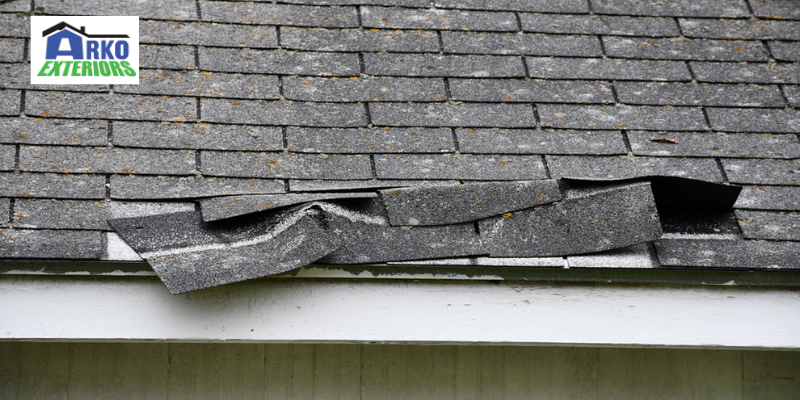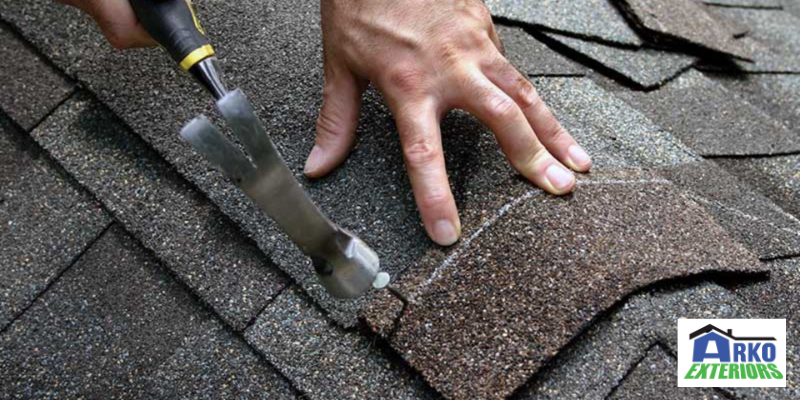When you have a leaky roof in your home, it can disturb your exterior and interior structures. Mostly this problem can bring a lot of interior damage from ruined floors to waterlogged attic insulation. Ugh.
Proper roof maintenance can improve safety and reduce the cost of roof repair. Also, fixing your roof when it is damaged is a serious project that you should not carry out by yourself if you do not have the skills or tools.
If you do decide to “do it yourself,” here are some roof repair tips when dealing with a leaking roof…
#1 Locate Leaky Areas

This can be easy if you start examining your roof in the less elevated areas such as the ceiling of your rooms. Some things that can aid you during this inspection include flashlights and a ladder, as they allow you to see or follow a vertical direction to the roof or easily access your home’s attic. A roof leak can start a little toward the roofline or higher up the roof ridge. The noticeable signs you will need to pay attention to are white or black stains on the deck, mildew and mold. These roof leak signs should not be ignored, as they can be spotted at the bottom of the roof deck.
#2 Inspect Your Roof Vents

Most roof leak problems are caused by damaged ventilation systems. Roof vents consist of turbines, attic fans, plumbing pipes and other materials with metal flashings that have expanded beyond the roof ridge. However, another main source of roof leaks may be badly damaged roof sheaths or decks. If you notice that the vent is the source of your roof leak, ensure that you go back and examine the rooftop to see if the boots have cracked or the vents have dislodged from their original placements.
#3 Get Rid Of The Damaged Vent
Now that you know the state of your vent, remove it with a pry bar. This tool helps in detaching the nails holding the roof to the vent. Afterward, use the same tool to pull back the roof concealing the vent base. At this point, you can assign someone to help you hold the roof. Be careful not to remove the roof– only remove nails binding the vent to the deck. You can easily remove the vent by following this tip.
#4 Replace The Vent
After removing the damaged roof vent, replace it by first applying an extensive amount of exterior sealants or roofing cement to the base of the vent’s flashing. You will also need an assistant here, to help you separate or roll back the roof while you gently move in the vent. When doing this, ensure that the downward area of the vent flashing rides above the roof, to stop leakage from happening. Finally, nail the vent to the roof, 4 inches away and at all points before covering the nails with thick sealant or cement.
#5 Remove Old Shingles
You may need to get rid of old roofing shingles if the leak location is the roof deck. Removing the shingles will help you gain more access to damaged areas of the roof. Move in the pry bar below the roof shingles and take it slowly upward as you extend to the roofline. Begin by moving two rows of shingles high up the area of repair before making your way downwards to the rows of the shingles. Remove loose nails with a pry bar as you gradually pull roof shingles away.
#6 Remove Old Roofing Underlayment
Old synthetic underlayment or roofing paper will keep the roofing deck and shingles apart. So, cut off the underlayment with a knife, and ensure you keep them intact.
#7 Remove Roof Deck
If the source of the leak is the roof deck, use chalk to mark out the areas of damage before using a pry bar to dislodge the nails from those sections. Afterward, pry the damaged deck woods off but ensure they are kept whole.
#8 Cut Out New Roof Deck To Patch Damaged Sections
You can use templates from the damaged areas of the roof deck to carry out accurate markings of the new roof patch. Ensure that after marking out these dimensions, you lay the roof deck on the floor while cutting out the patches to avoid accidents.
#9 Attach The Newly Cut-out Roof Deck Patch
You can do this on the roof by driving nails into the roof deck patch to hold them in place. You can use common nail types such as 8d nails.
#10 Lay Back Synthetic Underlayment Or Paper
Attach underlayment or paper with roofing nails. Ensure you overlap each row of roof shingles by 4 inches or more.
#11 Place The First Row Of New Roof Shingles
You can begin by working the bottom section to lay the first sets of new roofing sheathes. Keep up with the row by leaving the existing and new shingles to overlap each other from all dimensions. Afterward, apply thick roofing cement progressively on the base of the roof shingles. Finally, fasten the shingles with nails above the shingles.
#12 Complete The Roof Shingles
Start upward toward the upper row of shingles. Blend the new shingles with the old ones by gently moving the new shingles beneath the top shingle row.
Summary:
Roof repair can be quite a project to carry out by yourself, especially with asphalt shingles. Why do the work when a professional company like Arko Exteriors can do it for you? Call 763-434-2756 for more information.

